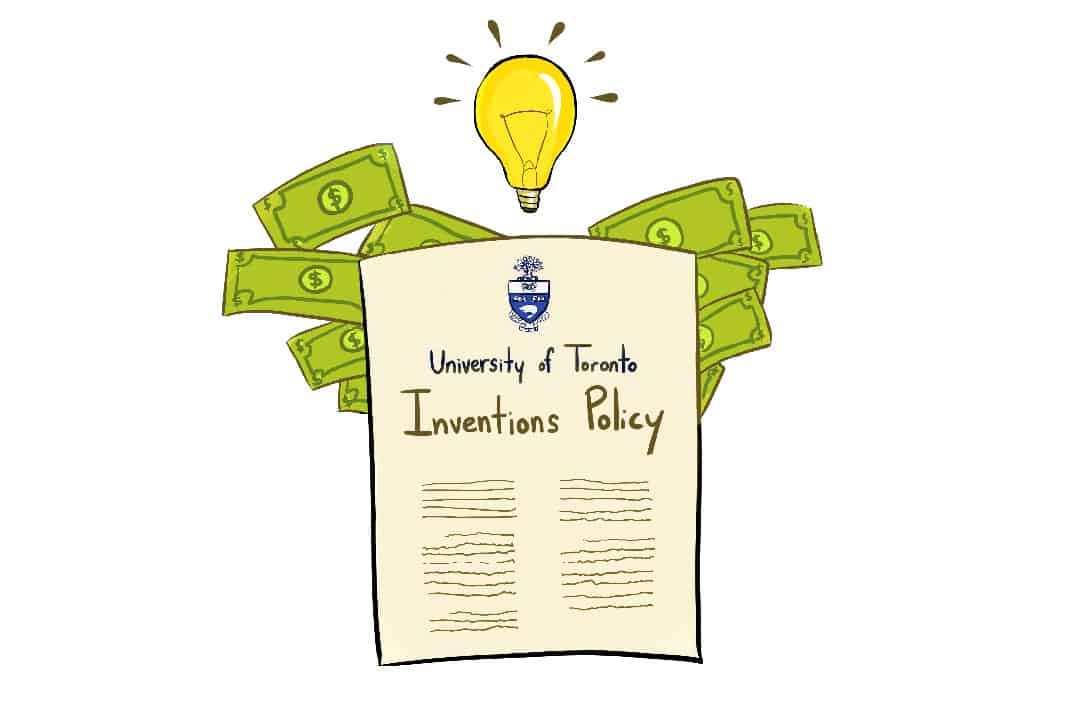As a leading hub of research and innovation, U of T leverages its vast network of affiliations and collaborations to provide its researchers with a plethora of invention opportunities. U of T is associated with inventions such as the electron microscope, the pacemaker, and, perhaps most famously, the development of insulin for the treatment of diabetes. So how does the university manage its inventions?
The Office of the Vice-President Research & Innovation
With the university’s resources and talent base, the Innovations & Partnerships Office aims to provide resources for entrepreneurs to patent their inventions or commercialize their work in partnership with the university. U of T prides itself in being able to help bring business solutions to market, boasting over 350 startup companies in its portfolio.
In order to achieve these goals and ensure that the revenue generated by its researchers’ inventions can support further research, the university outlines net revenue distribution based on revenue bands.
The Inventions Policy is administered by the Vice-President Research & Innovation — currently Vivek Goel — on behalf of Governing Council. The policy defines what constitutes an invention and which parties are bound by the policy. It also clarifies what an inventor can expect from the university and what the university demands in return.
Application of the policy
According to the policy, an invention is defined as something that is “more than an idea, theorem or algorithm.” Inventions include physical or intellectual property, whether they are patentable or not.
Inventors bound by the policy are any student, staff, faculty, visitor, or academic appointee who has made an invention using university resources. The point emphasized is that their use of university resources in the creation of their work subjects them to the obligations of the policy. These resources include use of facilities owned by U of T, work performed in U of T facilities, work performed using software provided by the university, and work supported by grants or funds administered by the university.
No exceptions are listed, but for practical purposes, the use of common, publicly accessible spaces or communication services such as U of T emails and Wi-Fi may not be considered significant use of resources for the invention to fall under the policy.
Ownership of the invention
Upon invention, it is the researcher’s responsibility to disclose their invention to the office of the Vice-President Research & Innovation. The disclosure allows the researcher and the university to address ownership if the need arises.
Under the policy’s rules, at the time of its creation, an invention is automatically co-owned by the inventor and the university. However, prior written arrangements agreed upon with a third party may supersede this rule.
An example of this is Huawei’s partnership with U of T, which has seen the telecommunications giant funnel at least $3.5 million to over a dozen research projects. In these cases, licensing rights are shared between Huawei and U of T.
In addition, the university exclusively owns all rights to an invention if researchers were instructed to make said invention. The policy can also be superseded by agreements that the university has with third parties for whom the inventor also holds an appointment.
Commercialization and division of funds
Once it is disclosed, the inventor can choose one of two options related to the legal protection, commercialization, and commodification of the invention. They can either offer the university sole ownership or take up these responsibilities themselves.
If the inventor offers the university commercialization responsibilities, they earn 60 per cent of the cumulative net revenue made from the invention. Once the invention passes a review process, the university may take up the task of patenting or attaining the copyright for the invention. The burden of commercialization is then accepted by the university — with the stipulation that the inventor can reclaim ownership if the university has not been deemed to have made reasonable efforts to commercialize the invention within two years.
Alternatively, inventors can take responsibility for legal protection and commercialization themselves. In this case, they claim 75 per cent of the cumulative net revenue, with the university receiving the remaining amount.
The funds apportioned to the university are divided across four avenues based on the cumulative net revenue for the invention and commercialization process. A portion is reserved for the inventor’s academic division and department. If commercialization is undertaken by the university, it receives 20 per cent of all net revenue as a management fee. The remaining funds are directed to the Connaught Fund, the largest internal university funding program in Canada with an endowment of over $120 million. By providing researchers funding to build on their work, the Connaught Fund aims to continue the cycle of research and innovation at U of T.


